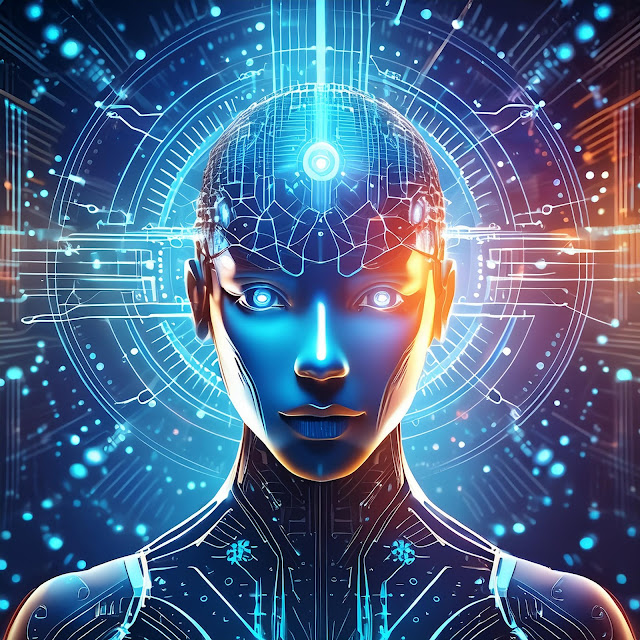The attention paid to artificial intelligence the past year or so has engendered a massive amount of jargon. Here are a few terms to get you started. Oh, I decided to add a few of my own comments to the definitions. If you want a very complete glossary of AI, see
https://en.wikipedia.org/wiki/Glossary_of_artificial_intelligence
Artificial Intelligence (AI): Computer systems capable of performing complex tasks that historically only a human could do, such as reasoning, making decisions, or solving problems. (my comments are in italics) AI is an oxymoron, it is neither artificial nor intelligent. It was an inappropriate term from the beginning and is only getting worse from overuse. It is primarily an advanced search engine with a natural language interface.
Artificial General Intelligence (AGI): A type of artificial intelligence (AI) that matches or surpasses human capabilities across a wide range of cognitive tasks. This is in contrast to narrow AI, which is designed for specific tasks. AGI is considered one of various definitions of strong AI.
No one, as yet, has developed anything approaching AGI notwithstanding the claims. According to Ray Kurzweill, AI development will reach the point at which machine's intelligence and humans would merge and technological growth becomes uncontrollable. Kurzweill calls this the "Sigularity" See eBay. “The Singularity Is Near : When Humans Transcend Biology by Ray Kurzweil... 9780143037880.” Accessed July 12, 2024. https://www.ebay.com/itm/404858685406. There is also a newer book eBay. “The Singularity Is Nearer : When We Merge with AI by Ray Kurzweil (2024,... 9780399562761.” Accessed July 12, 2024. https://www.ebay.com/itm/204877512096.
Chatbot: At the most basic level, a chatbot is a computer program that simulates and processes human conversation (either written or spoken), allowing humans to interact with digital devices as if they were communicating with a real person. Considering the fact that I have to communicate with the AI programs using this conversational tool, I guess I need to figure out the most efficient way to talk to them (it, whatever)
Prompts: AI prompting refers to the process of interacting with an artificial intelligence (AI) system by providing specific instructions or queries to achieve a desired outcome. It has become important to design the prompts in advance so that you don't spend a lot of time trying get a usable response.
Ch
Here are some additional examples using the same prompt with each chatbot.
Prompt:Tell me about the 1973 fire at the National Personnel Records Center and include which records were lost and which were saved. This is a standard type of question I would be asking in putting together a presentation on military records. Here is the main source for the information: National Archives. “The 1973 Fire, National Personnel Records Center,” August 15, 2016. https://www.archives.gov/personnel-records-center/fire-1973.
I might have pointed out previously that when I test a search engine or now, a chatbot, I ask questions about things I already know. That gives me an idea of the depth of the response. I had to take screenshots of the responses because they were going to make this post way too long. You can click on the image to see the text.
Google Gemini:
At the end of this fairly good explanation Gemini said I could find more information from archive.gov which is correct but not very useful. The fatal flaw is that I would need to go do the research myself and see if what Gemini said is correct. I suspect this will be the response from most chatbots.
ChatGPT 4o
About the same information but not sources even the link to the National Archives. When I asked it where it got the information, it said from NARA or National Archives and Records. Once again, I am back doing my own research.
Claude
Because I know the specific source of the information, I am puzzled why the chatbots can't just tell me where what they said came from. I suspect that the information they give me is from theri Large Language Model training and they really have no idea how to find the source of the information.
Microsoft Copilot
Now, this says about the same thing as the others, but there are footnotes and links to the National Archives document about the fire. Following the links takes you directly to a source. You can tell if the information given is consistent and accurate. Here is the link I used to create this prompt.
The 1973 Fire, National Personnel Records Center | National Archives
Here I am working in genealogy. I am spending time on the FamilySearch.org Family Tree where I find entries with sources and entries without sources. Presently, I find no use for a response either on the Family Tree or from a chatbot that doesn't give me sources. You can make up your own mind but I happen to like accuracy.










